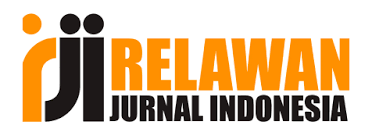STATE PROTECTION OF CHILDREN FROM HARMFUL INFORMATION
- Authors
-
-
Yunusova Minovvarkhon Sabirovna
Tashkent State University of Law, Uzbekistan
-
- Keywords:
- Harmful information, Digital technologies, Public information, Age indicators, Human rights, Confidential information
- Abstract
-
Objective: This study examines Uzbekistan's regulatory framework for information dissemination, focusing on safeguarding societal values and protecting vulnerable populations, particularly children. Method: A qualitative approach is employed, analyzing constitutional provisions, legislative acts, government resolutions, and categorization methods for information, alongside policy assessments and comparative reviews with international practices. Results: The findings reveal a structured legal framework balancing transparency with protection. Information is categorized into five types—beneficial, neutral, harmful, culturally sensitive, and misleading—each addressed through nuanced policies. Specific measures include the 2018 law mandating age-based content classification and expert accreditation to evaluate harmful content. Challenges identified include limited parental and institutional oversight and the need for technological solutions like AI-based filters. Novelty: This research highlights the integration of age-specific digital regulations and expert accreditation as innovative tools in mitigating harmful content, presenting a model adaptable to other jurisdictions. These findings emphasize the evolving landscape of information governance and the critical need for collaborative efforts among stakeholders to ensure a safer informational ecosystem.
- References
-
Law on Principles and Guarantees of Freedom of Information, Bulletin of the Parliament of the Republic of Uzbekistan, vol. 1, art. 2, 2003; vol. 52, art. 645, 2015; National Database of Legal Documents, Apr. 19, 2018, No. 03/18/476/1087.
Law on Principles and Guarantees of Freedom of Information, Article 6: Openness and Transparency of Information, Bulletin of the Oliy Majlis of the Republic of Uzbekistan, vol. 1, art. 2, 2003; vol. 52, art. 645, 2015; National Database of Legal Documents, Apr. 19, 2018, No. 03/18/476/1087.
Law on Principles and Guarantees of Freedom of Information, Article 3: Basic Concepts, Bulletin of the Oliy Majlis of the Republic of Uzbekistan, vol. 1, art. 2, 2003; vol. 52, art. 645, 2015; National Database of Legal Documents, Apr. 19, 2018, No. 03/18/476/1087.
"Recommendations for legislation on protecting society from harmful information while respecting human rights," Kun.uz, Jul. 6, 2023. [Online]. Available: https://kun.uz/kr/news/2023/07/06/jamiyatni-zararli-axborotlardan-himoya-qilishda-inson-huquqlari-buzilmasligi-kerak-huquqshunosdan-qonunchilikka-tavsiyalar. [Accessed: Nov. 30, 2024].
"A new law entered into force in Uzbekistan," Xabar.uz. [Online]. Available: https://www.xabar.uz/jamiyat/ozbekistonda-yangi-qonun-kuchga-kirdi. [Accessed: Nov. 30, 2024].
"Protecting children from harmful information," Xabar.uz. [Online]. Available: http://m.xabar.uz/jamiyat/bolalarni-zararli-axborotdan-himoya. [Accessed: Nov. 30, 2024].
- Downloads
- Published
- 2024-12-06
- Section
- Artikel
- Categories
- License
-
Copyright (c) 2024 Yunusova Minovvarkhon Sabirovna

This work is licensed under a Creative Commons Attribution 4.0 International License.
How to Cite
Similar Articles
- Yunusova Minavvarhon Sabirovna , THE POTENTIAL OF ARTIFICIAL INTELLIGENCE IN MANAGING INFORMATION NEEDS AND HARMFUL INFORMATION , International Journal of Business, Law and Political Science: Vol. 2 No. 5 (2025): International Journal of Business, Law and Political Science
- Yunusova Minavvarkhon Sabirovna Sabirovna, THE ROLE OF ARTIFICIAL INTELLIGENCE IN DETECTING DIGITAL CRIMES , International Journal of Business, Law and Political Science: Vol. 2 No. 9 (2025): International Journal of Business, Law and Political Science
- Lailul Mursyidah, Ilmi Usrotin Choiriyah, Ari Nur Aliyah Rohalia, ARCHIVE MANAGEMENT IN THE DIGITAL ERA: CASE STUDY OF ADMINISTRATION OF SMA NEGERI 4 SIDOARJO , International Journal of Business, Law and Political Science: Vol. 1 No. 2 (2024): International Journal of Business, Law and Political Science
- Mukhamedova Z.M. Z.M, BIOETHICS AS A TOOL FOR SHAPING NATIONAL IDENTITY , International Journal of Business, Law and Political Science: Vol. 2 No. 9 (2025): International Journal of Business, Law and Political Science
- Abdusaidova Gulrukhsorabegim Komiljon Kizi, HUMAN RIGHTS PROTECTION IN CRIMINAL PROCEDURE: A SCIENTIFIC EXAMINATION , International Journal of Business, Law and Political Science: Vol. 1 No. 9 (2024): International Journal of Business, Law and Political Science
- Sarvar Tojiboyev, THE NOTION OF BIG DATA AND ITS LEGAL ASPECTS , International Journal of Business, Law and Political Science: Vol. 2 No. 4 (2025): International Journal of Business, Law and Political Science
- Gulchehra Tulaganova , ISSUES OF IMPROVEMENT OF THE INSTITUTION OF ADVOCACY IN CRIMINAL PROCEEDINGS , International Journal of Business, Law and Political Science: Vol. 1 No. 9 (2024): International Journal of Business, Law and Political Science
- Topildieva Dilrabo Mirshakhidovna, ISSUES OF INVESTIGATION OF CRIMES IN THE FIELD OF MEDICAL TRANSPLANTOLOGY , International Journal of Business, Law and Political Science: Vol. 1 No. 8 (2024): International Journal of Business, Law and Political Science
- Nozimakhon Sobirova, PLAGIARISM IN ACADEMIC TEXTS LEGAL AND ETHICAL ISSUES , International Journal of Business, Law and Political Science: Vol. 1 No. 6 (2024): International Journal of Business, Law and Political Science
- Xasanov Boburbek Utkir o’gli, Boburbek Khasanov Utkir ugli, THE ROLE AND DEVELOPMENTAL TRENDS OF THE PRELIMINARY INVESTIGATION INSTITUTION IN CRIMINAL PROCEDURAL LAW , International Journal of Business, Law and Political Science: Vol. 2 No. 8 (2025): International Journal of Business, Law and Political Science
You may also start an advanced similarity search for this article.


















